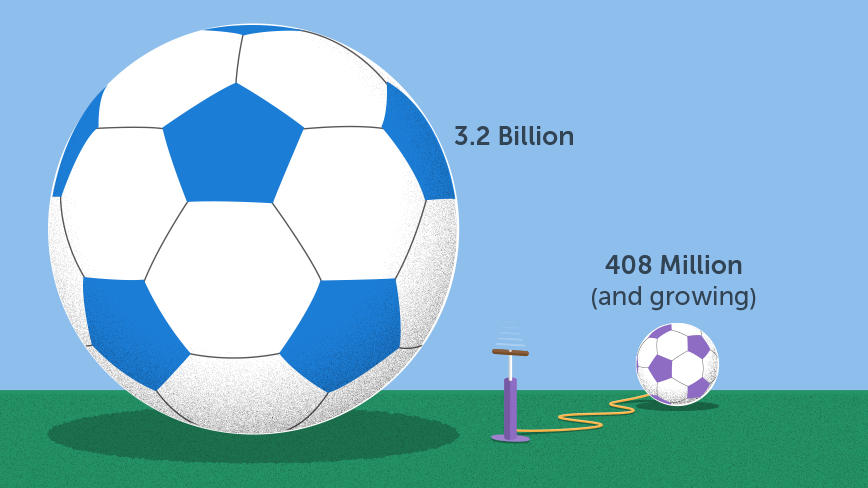In just a few short weeks, the best women footballers in the world will take to the pitch and prove which country’s team is the best.
This event is still quite young in the scheme of international tournaments, with the Men’s World Cup starting in 1930 and the women’s in 1991. While the 2011 FIFA Women’s World Cup in Germany reached an impressive 407.8 million international viewers, the Men’s event in 2010 reached 3.2 billion.
Figures like these illustrate that the women’s tournament is still trying to find its footing with TV audiences, and working to attract brands seeking campaign opportunities.
“The fan base is growing for the Women’s World Cup,” explains University of Oregon’s director of its Sports Product Management Program Ellen Schmidt-Devlin, “but it will take some more time.”
Since core audiences for the event are still developing, identifying a specific consumer demographic for the average Women’s World Cup viewer has proven difficult. Many brands are hedging their bets by trying to approach audiences from a more general standpoint with the tournament as a backdrop, a strategy predicted to have a “much greater impact” by NPD Group sportswear retail analyst Matt Powell.
In the end, capitalizing on the Women’s World Cup will likely be more about the emotions and inspiration than any specific goal or game. Brands will seek to refine this type of approach by looking closely at consumer data to determine which type of narrative resonates best.
Women Finding Their Place in Sports, and Being Better for It
A lot of excitement surrounds the performance of this year’s U.S. Women’s Soccer Team. The team has won the cup twice before, and came close to winning in 2011. Many players like Alex Morgan and Megan Rapinoe have already built a fan base. Yet for all of their visibility, few brands have stepped up to the plate with campaigns featuring these superstars.
Both Morgan and Rapinoe have endorsements from Nike, and Morgan has previously penned deals with ChapStick and Panasonic. Commercials and campaigns featuring the star players will almost certainly materialize in time for the tournament’s June 6 kick off, but as of now only tournament broadcaster Fox Sports has tried to tap into the excitement of U.S.
Instead, many brands are trying to inspire women to break through social barriers and gender roles. Nike has already begun rolling out their new “Better for It” campaign, which is intended as a motivational push to get more women to be active by addressing insecurities.
Approaches such as these that tout women as powerful, admirable figures rather than the superhuman portrayals that most male athletes receive are assumed to be more marketable to the wider female sports audience. “Translating watching sports into buying sports products is more direct for men than women,” says Oregon’s Schmidt-Devlin, so brands are trying to gain traction by pitching active lifestyles.
Navigating Uncharted Waters Through Rich Data
But that’s not to say that specifics won’t be present. Expect endorsements for teams and athletes to appear within the next several weeks as the tournament begins and finals approach. This year also marks the first time that the official women’s team jersey will be made available in men’s sizes.
Data surrounding purchases, campaign interactions, TV viewership and online engagement will all inform later advertising decisions. Until the next World Cup in 2019, brands will be trying to make sense of the growing audience for women’s sports and discover tactics to appeal best to the developing market’s values.

